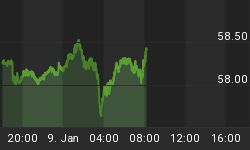The Federal Reserve's latest asset purchase program, QE3, is coming to an end. What was once an $85 billion a month program, one in which at its peak had been goosing the financial markets and economy at an annual rate of $1.0 trillion - and over its 27 month life will have pumped $1.7 trillion of money into the economy - is going to zero. Given the outsized impact QE has had on the growth of U.S. money supply and thus the U.S. economy, we say investors take note, especially those furthest out on the risk curve, because what wasonce your primary tailwind could soon become your greatest headwind.
Here's why...
Recapping the tenets we presented here, here, and here, once an economy is subjected to a bout of monetary inflation, whether that be via direct central bank money creation or via money (and credit) creation by the fractional reserve banking system, an unsustainable, artificial economic boom is born, whereby malinvestments (bubbles if you like) are created that sooner or later must be liquidated. And whether that bust takes the form of a hyperinflationary bust or a deflationary bust, bust we will get. The form the bust takes will depend on the course of the inflation. If the central bank/banking system pursues an inflationary course, by throwing continual and importantly ever larger doses of money (and credit) into the economy, the bust will take the form of a hyperinflationary bust - a collapse in the value of the currency and with that a breakdown of the entire economy. If instead the central bank/banking system ends its money creation activities or even moderates that increase in a material way, the bust will take the form of a deflationary bust - a healthy liquidation of the malinvestments made during the boom and with that a commensurate fall in the prices of those same malinvestments.
Click here to continue reading the rest of the article.
















